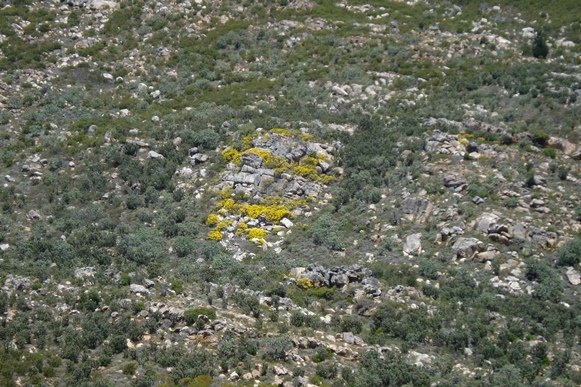Hymenolepis

Author: Ivan Lätti
Photographer: Judd Kirkel Welwitch
Hymenolepis is a genus of shrubs that are sometimes hairy. Where indumentums are present the hairs are stellate. This means the hairs have branches that spread horizontally. The plants form part of the Asteraceae family, commonly known as false Karoo, in Afrikaans as basterkaroo (hybrid Karoo).
The alternate leaves are entire and lance-shaped or lobed narrowly to needle-like, the surfaces leathery.
The small, yellow flowerheads are discoid with no ray florets, consisting of six to ten disc florets each. The heads grow in dense, flat-topped, corymb-shaped clusters. The involucres at the base of the heads are narrowly ellipsoid to cylindrical or cone-shaped, the bracts growing in three to five rows. The flat receptacles under the heads usually have chaffy scale coverings. The bisexual florets are funnel-shaped and five-lobed with visible nerves and covered in short-stalked glands on the corolla tubes.
The dry single seeds from inferior ovaries, the cypselas, are ellipsoid to cylindrical or obovoid and hairless but with five to ten ribs. These fruits have pappuses of fringed scales.
There are seven Hymenolepis species, all endemic to the Western Cape and the Eastern Cape. Hymenolepis can be differentiated from Athanasia by the pappus scales and slender capitula.
The plant flowering yellow in picture may be Hymenolepis crithmifolia (Leistner, (Ed.), 2000; Manning 2007; Wikipedia).

